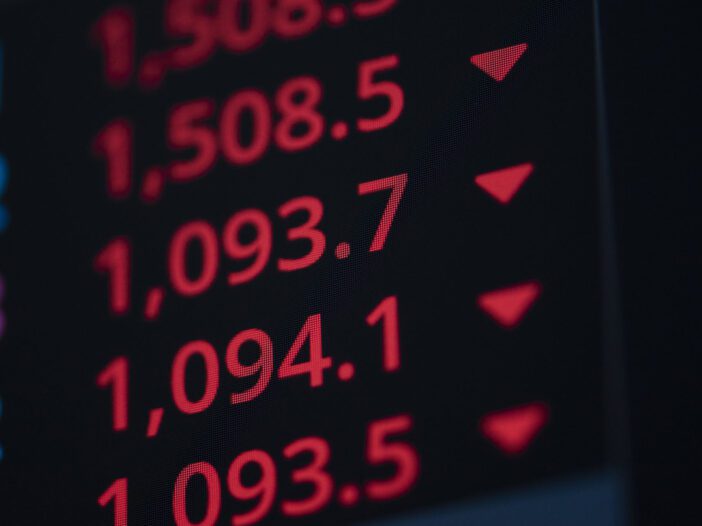The great ‘River of No Returns’ — Amazon.com — went over a waterfall on Friday. From Forbes:
‘Shares of Amazon collapsed Friday after the e-commerce monolith reported worse-than-expected earnings spurred by high inflation and lingering supply chain constraints, pushing the stock down more than 30% below its record high and extending a slate of massive losses among formerly high-flying technology firms.
‘Amazon stock tumbled 14% Friday to $2,485, logging its worst day since 2014 and wiping out about $210 billion in market value.
‘Spurring the losses, the Seattle-based giant on Wednesday reported an unexpected loss of $3.8 billion in the first quarter, or $7.38 per share, significantly worse than the $8.36-per-share profit analysts were expecting and much lower than the profit of $8.1 billion a year earlier.’
But what did you expect? Nature imposes symmetry. And in a market economy that means:
‘Those stocks that go up the most in a boom are the ones that go down the most in a bust.’
The first shall be last
There are always market leaders. Some companies stand out. Either because they have snazzy new technologies or better business models. And they seem unstoppable…indestructible. They’re the companies everyone knows. And they can afford to hire the very best talent. Then, with the leading engineers and innovators on their payroll, they should be able to meet challenges better than their competitors — including adapting to innovations as well as developing the next big technologies.
At least, that’s what investors expected from IBM, Minnesota Mining and Manufacturing, Kodak, Sears, Coca-Cola, and Xerox. These companies were members of a group of sizzling stocks from the 1960s — the Nifty Fifty.
They were ‘nifty’ because they grew faster, and made more money for investors than other stocks. And they had brands that looked unbeatable.
Who could resist ‘Avon calling’? Who didn’t know that ‘Things go better with Coke’? Who didn’t shop at Sears? What office didn’t have a Xerox machine?
But just as day begets night, so does success beget failure. When the big breakthrough in photo technology — digital imagery — came along, for example, did Kodak lead the way? Nope. And when women wanted perfumes and makeup with a little more chic — was Avon on the case? Nope…it was French brands — Givenchy and Dior — that gave them what they wanted. And who led the world into the laptop computer/tablet/iPhone age…IBM? Nope again, it was Microsoft and Apple.
Similar retrospectives could be written about any of the Nifty Fifty companies. The common feature was symmetry. They went up…then they went down.
As a group, the Nifty Fifty outperformed on the way up. Then, when the ‘60s boom turned into the ‘70s bust, they outperformed again…on the way down. From Bridgeway Partners:
‘The recession of 1973–1975 ushered in a period of low economic growth, and with it a bear market…the S&P 500 fell by over 14% in 1973 and lost over 26% in 1974. But the Nifty Fifty stocks fell even more, dropping over 19% and then 38% in those two years. Markets did recover somewhat after that, and the S&P 500 gained on average about 2.5% annually over the five years from 1973–1977. But the Nifty Fifty still lagged, with five-year average returns of -4.4%. …those Nifty Fifty stocks with the highest P/E at the peak tended to have the lowest subsequent returns.’
The Amazon of the ‘60s
Sears is the one we know best.
Growing up in the ‘50s and ‘60s, we shopped at Sears. Everyone did. If Sears didn’t have it, you didn’t need it. In the 1950s, the Sears catalogue was more than toilet paper. It was a ‘Consumer Bible’ where all that was good in American industry was on display. It showed us the latest fashions, gadgets, appliances, and precision tools — everything that set the US so far ahead of its competitors. In it, you could find everything you were looking for…and much more than you never knew you wanted.
The Sears’ Christmas catalogue — the Wishbook — was a marvel of marketing to children. It kept them occupied for days, making careful notes and comparisons.
Richard Sears was a century ahead of Jeff Bezos. His catalogue was the paper-era precursor of Amazon. And his company, with its huge customer base, expertise, and purchasing power…was the retailer Numero Uno…in the top retail market in the world.
In the 1960s, Sears expanded its network of brick-and-mortar stores. They were innovative, car-oriented outlets, typically away from the city centres. Frequently, they were anchor tenants in huge malls. And they were built from the inside out — focused on the shoppers’ experience inside the stores — often without windows to the outside world.
Unlike Amazon, Sears owned its own brands — Kenmore, Craftsman, DieHard, etc. It developed its own ‘Discover’ credit card. It had its own insurance, auto repair, and investment subsidiaries.
Sears had a huge lead on its competitors. It had plenty of money. And it had management nonpareil. But there’s an old saying on Wall Street (that we just made up): ‘When unstoppably brilliant management confronts the symmetry of market forces, bet on symmetry.’
As recently as April 2007, 115 years after its founding, a share of Sears Holdings would have cost you US$193. On Friday, the price was 5 cents.
Regards,
 |
Bill Bonner,
For The Daily Reckoning Australia

